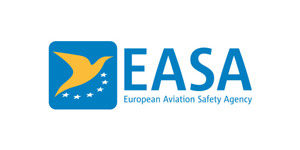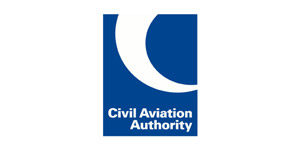Frustrated about Brexit? Bemused even? The United Kingdom should be one week into its supposed post-European Union bohemia yet here we are. As I write, the UK is still part of the EU with any potential outcome still possible at this late stage.
Well, spare a thought for industry. The lack of certainty over the nature of the UK’s exit from the EU has made it very difficult to plan for the future, as all eventualities need to be provisioned for until “deal or no deal” is agreed.
In civil aviation, the situation is relatively straightforward for Production Organisations (POAs) and Maintenance Organisations (MOAs) approved by the European Aviation Safety Agency (EASA). Their oversight is already delegated to National Aviation Authorities which, in the case of the UK, is the Civil Aviation Authority (CAA). Transition would be relatively simple to implement in a no deal or hard Brexit scenario.
For this eventuality, prudent UK-based POAs and MOAs have already applied to EASA for what is called a “Third Country” approval, which would allow them to continue using Authorised Release Certificate EASA Form 1 but only for products (except complete aircraft), parts and appliances designed and approved in the EASA system and destined for use on aircraft registered in the EU.
To supply the same products, parts and appliances for the same aircraft types registered outside the EU requires an alternative to EASA Form 1. Leaving the EU in any form would mean that UK organisations could not legally use the existing Bilateral Aviation Safety Agreements (BASAs) the EU has with the USA, Canada and Brazil for the reciprocal ‘co-operation in the regulation of civil aviation safety’. As EASA Member States that are not EU Member States, this already applies to Norway, Switzerland, Iceland and Liechtenstein.
Fortunately, the UK CAA has been proactive in this case. Implementation Procedures for Airworthiness are in place for a BASA between the USA and UK governments in the event of a no deal withdrawal from the EU and the CAA has a Working Arrangement (WA) with Transport Canada Civil Aviation (TCCA), responsible for Canadian aviation regulation. This means UK POAs and MOAs can supply parts to American and Canadian registered aircraft using the CAA equivalent of the EASA Form 1, accepted under the terms of the respective BASA or WA. Presumably the CAA is still in negotiation with the Brazilian regulator (ANAC) regarding a Working Arrangement with them.
For Third Country UK POA and MOA applications that are accepted by EASA, the approvals would become valid only when the UK is no longer legally part of the EU. If a Third Country approval is not eventually required, the fees for the applications would not be refunded…

The situation is more complicated for UK-based Design Organisations (or DOAs) holding European Aviation Safety Agency (EASA) Part-21 Subpart-J Approvals. Unlike EASA-approved POAs and MOAs, DOAs are directly overseen by the Agency’s DOA Team in Cologne, Germany. In the event of the UK’s withdrawal from the EU, responsibility for the UK-based DOAs will pass to the CAA as the UK will become State of Design for new product (aircraft, engine and propeller) types and parts and appliances related to design changes and repairs.
At a Brexit seminar hosted by the CAA at Aviation House in Gatwick in mid-December 2018, the following courses of action were proposed for UK-based DOAs: –
-
- Transfer principal place of business to a EU member state.
- Seek EASA Third Country approval.
- Seek EASA Third Country approval and obtain UK DOA for BASAs/WAs.
- Obtain UK DOA.
The big, multi-national Original Equipment Manufacturers (OEMs) are already either covered or have mitigation strategies. Although Airbus has UK facilities, its DOAs are based in France. Rolls-Royce’s UK approval was revoked on 22 February 2019, with their concurrent German DOA scope extended to cover their UK-based design competences.
The small DOAs, a number of whom whose bread and butter is solely design change and repair activity allowed by their Terms of Approval, face a more difficult situation. The most straightforward options are if the Design Organisation’s business case is based solely in the EU (then options 1 or 2 apply) or solely in the UK (option 4). However, due to the international nature of most cases, the need for dual EASA/CAA Design Organisation Approvals is expected to apply to most UK-based DOAs.
To minimise disruption, UK regulation will align with existing European regulation on the date the UK withdrawal from the EU. UK CAA Part-21 for Product Certification and Initial Airworthiness will effectively be a “copy & paste” of EASA Part-21 with the required administrative changes to ensure it is workable within UK law. This will ensure continuity and the CAA will continue to align with EASA, although there is the possibility for regulatory divergence in the future (which is not ideal).
As such, the CAA invited Design Organisations to make an initial application for a UK DOA based on evidence provided by the DOA of their existing EASA approval, including Certificate and Terms of Approval, Design Organisation Handbook (DOH), EASA Form 4s for existing key staff and recent EASA Surveillance Audit reports amongst other requirements. Again, those CAA approvals would only become valid when the UK is no longer part of the EU and not before.
The CAA’s preferred scenario for their oversight of DOAs opting for Option 3 would be to have the EASA DOH as the DOA’s primary procedures and have a CAA DOH Supplement to cover the differences, ostensibly to have the necessary procedures to cover bilateral arrangements with other countries and regulating bodies relating to the UK rather than the EU.
There is, however, an elephant in the room. All the while a withdrawal agreement is not in place and technically ‘in negotiation’, EASA has not been allowed to formally discuss any Brexit plans, including contingency plans, with the CAA. This means no Bilateral Arrangement, be it a BASA or WA, between the UK and EU has been provisioned for so far. Also, unlike POAs and MOAs, EASA is not open to early applications for Third Country DOAs from the UK.
Therefore, it is by no means certain that UK DOAs will maintain the same scope and Terms of Approval if they transfer to a Third Country approval. A common compliant from existing Third Country DOAs, often voiced at EASA Product Certification and DOA Workshops, regards the lack of support provided by EASA for major changes and Supplemental Type Certificates (STCs). This is because of the legal implications surrounding the required EASA involvement in major changes and repairs, and the EASA approval of STCs as Certifying Authority, when the product (aircraft/engine/propeller) to be changed is not registered in an EU state.
It has been such an issue for EASA that more recent Third Country Design Organisation Approvals have been limited to minor changes and repairs only. If EASA has to follow the same approach for UK DOAs, this would require substantial additional activity to accommodate the gaps in existing scope.
The most pressing issue would be to complete active certification projects either before the UK leaves the EU or before an agreed extension deadline. Then the CAA DOH would need to include procedures for major changes and future STCs to be approved by UK CAA as Certifying Authority, increasing the scope of required CAA surveillance for the DOA from just Bilateral Arrangement requirements. UK DOAs would also be dependent on creation of a BASA between the UK and the EU or WA between CAA and EASA to facilitate EASA validation of CAA-certified STCs for use on European aircraft.
It is presumed that existing major changes and STCs approved before the Brexit date would be unaffected. However, where UK DOAs are the STC Holder, how could a major change to an EASA-certified STC be certified if the organisation’s Third Country approval is limited to minor changes? Presumably it could possibly be done if the STC is validated by UK CAA, then the major change applied for with CAA using the UK DOA procedures and finally the CAA-approved STC with major change is submitted for validation by EASA. A convoluted process and, if the UK DOA’s Third Country EASA approval scope excludes major changes, would this even be allowed?

Undoubtedly, both EASA and UK CAA have worked tirelessly to formulate contingency plans to mitigate the adverse effects of the looming potential disruption. However, some certainty as to the form of Brexit is actually needed now so that the current unknowns can be dealt with directly between CAA and EASA. Otherwise precious resource continues to be used to cover all possible outcomes, complete existing mitigation activity and adjust mitigation plans as EASA Part-21 requirements continue to evolve while the draft CAA Part-21 requirements need to realign for when the UK withdraws from the EU.
Thankfully, a week after the CAA Brexit seminar the EU proposed to extend the validity of certain certificates by a period of nine months. This includes approval certificates for DOAs and approval certificates related to their certification activity. UK DOAs can carry on as before for now, having been given breathing space until next year (presuming this period starts on the date the UK leaves the EU).
The potential gaps between the CAA’s mitigation plans and EASAs won’t be the work of a moment to resolve. In the meantime, UK-based DOAs will need to continue to plan and assess their certification projects to determine the risks posed by Brexit and its ongoing extensions and delays.
The next deadline with respect to Article 50 for the UK’s withdrawal from the EU is 12 April 2019. Yesterday, the UK Parliament narrowly voted to prevent a no-deal withdrawal from the EU. If an extension is requested and the EU do not grant this, the UK will leave the EU on Friday next week. It’s back over to the politicians yet once more…
To keep up to date with the latest developments, click on the links below for the EASA and UK CAA websites



Recent Comments